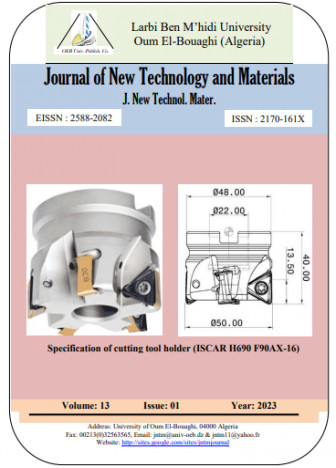Synthesis, characterization of (Ag-SnO2) nanoparticles and investigation of its antibacterial and anti-biofilm activities
Keywords:
Co-precipitation method, Ag-SnO2 nanoparticles, Antibacterial, Anti-biofilm, Minimum inhibitory concentration.Abstract
Silver-doped tin oxide (Ag-doped SnO2) nanoparticles (NPs) were manufactured by using chemical co-precipitation
method. The synthesized Ag-doped SnO2 nanoparticles were characterized by using X-Ray Diffraction (XRD) analysis,
Dynamic Light Scattering (DLS), Fourier-transform infrared spectroscopy (FTIR), Scanning Electron Microscopy (SEM),
Energy-dispersive X-ray spectroscopy (EDX) and Ultraviolet-visible (UV-Vis) spectroscopy. The antibacterial activity of the
prepared Ag-SnO2 nanoparticles was carried out by agar well diffusion method and determination of minimum inhibitory
concentration against both Gram-negative (Escherichia coli, Pseudomonas aeruginosa, Klebsiella pneumoniae) and Gram-
positive bacteria (Staphylococcus aureus, Bacillus cereus, Enterococcus faecalis), anti-biofilm activity was investigated using
96-well microtiter plate method against Staphylococcus aureus and Pseudomonas aeruginosa. XRD Results confirm
formation of Ag-doped SnO2 nanoparticles, the average grain size was found to be 23 nm; while DLS analysis indicates an
average size around 29 nm. Morphological findings by SEM indicate dense particles with sponge-like microstructure that are
uniformly organized irregularly, The EDX analysis confirms the purity of these nanoparticles with peaks of Ag, Sn, and O
atoms. SnO2-Ag NPs were exhibited good antibacterial activity against all bacterial strains tested with maximum zone of
inhibition of 27 ± 1.2 mm for S. aureus, the minimum inhibitory concentration values varied between 8 and 128 μg / ml.
The significant percentage of biofilm inhibition was found 73.96% and 71.19% against S. aureus and P. aeruginosa biofilm,
respectively.





